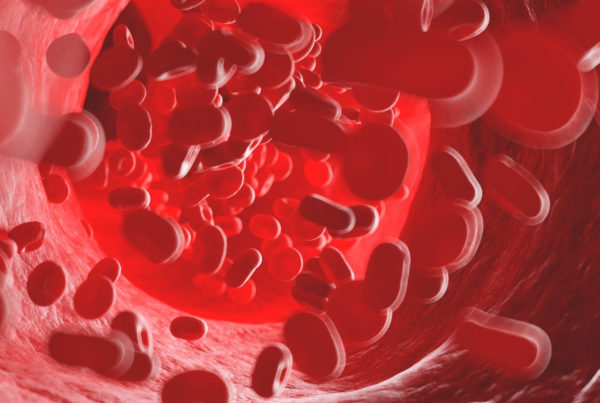
The following article has been taken with permission from the 2017 Spring Edition of Diabetes Ireland which is published by Diabetes Ireland.
While the revised recommendations of the new food period are nutritionally sound, when compared to our weight loss programmes we advocate a diet that derives much of its energy from lean protein and vegetables rather than carbohydrates and fruit both of which are higher in sugar. Additionally when weight loss is concerned dairy should be limited due to its high-fat content.
Here is the article……
The food pyramid is a visual tool designed by experts to help us make the best food choices. It has been updated, writes Pauline Dunne (Dietitian and Regional Development Officer (Western Area), Diabetes Ireland).
The Department of Health keeps dietary recommendations under review as part of its role in promoting evidence-based public health. As part of this review, the new Healthy Food for Life – the Healthy Eating Guidelines and Food Pyramid have been developed by the Department working in partnership with other experts in nutrition in Ireland.
Healthy Food for Life is a toolkit which includes a new food pyramid and guidance material to help people make choices to maintain a healthy, balanced diet. The resources reflect best national and international evidence and advice. The guidance applies to everyone from five years of age upwards.
What is the food pyramid?
It is a visual representation of how different foods and drinks contribute towards a healthy, balanced diet. The food pyramid allows individuals the flexibility to choose foods and drinks from each shelf depending on their preferences. It organises foods and drinks into five main shelves, starting from the most important shelf on the bottom.
So, what’s on the shelves?
Shelf one: Vegetables, salad and fruit (at least five to seven servings a day)
– base your meals on these and enjoy a variety of colours. More is better. Limit fruit juice and smoothies to unsweetened, once a day and keep the portion size to no more than 150ml. A person with diabetes should aim for a portion no greater than 100ml – this is because juices and smoothies tend to be high in natural sugars, so can make blood glucose rise quickly. Aim to eat the whole fruit and vegetables where possible to get the most nutrient value.
Shelf two: Wholemeal cereals and breads, potatoes, pasta and rice (three to five servings a day, up to seven servings for teenage boys and men age
19- 50). Wholemeal and wholegrain cereals are best. It is a good idea to weigh/measure out your portions of these foods as it is easy to eat too much of them. Eating portions that are bigger than our body needs regularly can lead to raised blood glucose readings, and overweight
Shelf three: Milk, yogurt and cheese (three servings a day and five from the age of nine to 18) – choose reduced-fat or low-fat varieties to help keep to a healthy weight. Choose low fat or skimmed milk and natural or 0%fat yogurt more often than cheese. Remember, naturally occurring sugars such as lactose and galactose which are found in milks and yogurts, can also raise our blood glucose, so it is a good idea to be mindful of portion sizes.
Shelf four: Meat, poultry, fish, eggs, beans and nuts (two servings a day) –choose lean meat, poultry (without skin) and fish. Eat oily fish up to twice a week, examples include mackerel, salmon, sardines, trout, kippers and herrings. Tinned varieties are fine – just be sure to drain off any oil or brine. Choose eggs, beans and nuts regularly, again measuring portion sizes if you are unsure how much you usually take compares to the guideline. Limit processed salty meats such as sausages, bacon and ham. Try to eat them less often
Shelf five: Fats, spreads and oils (in very small amounts) – use as little as possible. Choose mono or polyunsaturated reduced fat or light spreads. Choose rapeseed, olive, canola, sunflower or corn oils. Limit mayonnaise, coleslaw and salad dressings as they also contain oil. The suggested serving for most adults is just one portion of spread, and one teaspoon of oil daily. Always cook with as little fat or oil as possible by grilling, oven-baking, steaming, boiling or stir-frying.
What about the sixth (top) shelf?
The revised food pyramid now separates the top shelf from the rest of the pyramid. The top shelf includes foods and drinks high in fat, sugar and salt, which are not needed for good health and should not be consumed every day.
Many processed foods like cakes, biscuits and confectionery contain high levels of added sugars and can be high in calories and may cause obesity which can lead to heart disease, type 2 diabetes and some cancers.
Takeaways and ready meals can be very high in salt and fat, further increasing our risk of heart disease and stroke. A very small amount, to a maximum of once or twice a week is sufficient. Examples of very small amounts are: one scoop of ice-cream; three to four squares of chocolate; one small cupcake without icing; half a can of fizzy drink; five to six chips; and one bag of lower fat crisps. How do I use the food pyramid?
Use the food pyramid to plan your daily food choices. The food pyramid shows how much of what you eat overall should come from each shelf to achieve a healthy, balanced diet. The shape of the food pyramid shows the types of foods and drinks people need to eat the most to ensure healthy eating.
It is divided into six shelves and each provides you with the range of nutrients and energy needed for good health. Healthy eating is all about choosing the right amounts from each shelf.
Maybe write down everything you eat and drink for a few days. Then compare how what you ate and drank looks in comparison to the food pyramid, and see if there are any changes you could take on board to make your diet healthier. Following the food pyramid doesn’t mean that you need to achieve balance with every meal, but aim to get the balance right over the day and over the week.
Small changes can make a big difference. For more information, and some helpful guides visit Healthy Ireland.
Key messages
* Limit high fat, sugar and salt foods from the top shelf of the pyramid to no more than once or twice a week
* Eat more fruit and vegetables, at least five to seven servings a day
* Use the pyramid as a guide for serving sizes and remember that portion size matters.
Who is Diabetes Ireland?
Diabetes Ireland is the only national charity dedicated to providing support, information, care and a range of services to help improve the lives of those affected by diabetes. We also raise public awareness of diabetes and its symptoms, and fund research projects, some of which focus on finding a cure for Type 1 diabetes.
Diabetes Ireland relies heavily on fundraising to provide these vital services and supports, and our work is only possible because of fundraising support from the Irish public.
Find out more at www.diabetes.ie



